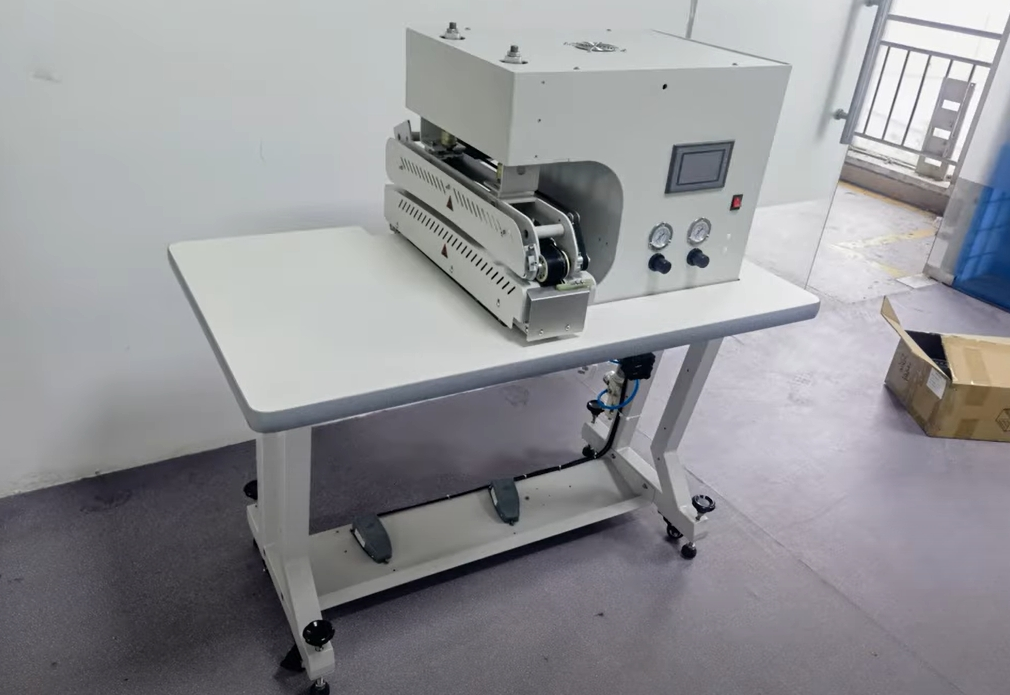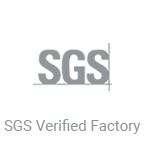In the ever-evolving textile and garment industry, precision, efficiency, and high-quality finishes are key components of production success. Among the most critical aspects of garment manufacturing—especially for seamless garments—is the proper handling of fabric edges. A clean, durable hem not only improves the appearance of the final product but also enhances its performance, comfort, and longevity. This is where the One Step Hemming Machine becomes an indispensable tool, allowing manufacturers to streamline operations while delivering superior results.
Why Hemming Matters in Seamless Garments
Seamless garments, such as activewear, underwear, shapewear, and technical sportswear, demand exceptional quality in every detail. Since these products are worn directly against the skin and are often subjected to high levels of movement and stretch, the fabric edges must be smooth, flat, and resilient. Any bulky seams or unfinished edges can lead to discomfort, irritation, and a compromised fit.
Traditional hemming processes, which often involve multiple steps—folding, sewing, and pressing—can be time-consuming and prone to inconsistencies. These issues are magnified when working with delicate or high-stretch fabrics like nylon-spandex blends, microfiber, modal, or seamless knitted fabrics, which are common in modern apparel. In contrast, a One Step Hemming Machine allows for a continuous, accurate, and high-speed hemming process ideal for these applications.
How Does the One Step Hemming Machine Work?
The One-Step Hemming Machine is designed to automate and integrate the full hemming process into a single, continuous workflow. For seamless garments and technical textiles, this provides multiple benefits in terms of both productivity and final product quality. Here’s how the process typically works:
1. Feeding the Fabric
The fabric edge is guided into a specially designed hemming folder. This folder precisely folds the fabric edge to the desired width (usually between 5mm and 20mm, depending on the garment specification).
2. Edge Sealing or Stitching
Depending on the machine model, the hemming is secured either by:
- Ultrasonic bonding (ideal for synthetic, stretchable fabrics)
- Coverstitch sewing (for reinforced hems)
- Adhesive application and heat sealing (for smooth, stitch-free edges)
For seamless garments, ultrasonic and adhesive hemming are highly popular as they avoid creating bulk and maintain the sleek, minimalistic design that consumers expect from premium products.
3. Final Heat Pressing
One of the key features of advanced One-Step Hemming Machines, such as those offered by Alster, is the integrated final heat press system. This applies controlled heat and pressure to the hemmed edge, performing several critical functions:
- Activating adhesives (when applicable)
- Flattening the hem to remove any minor puckering
- Enhancing the bond strength of ultrasonic or adhesive hems
- Creating a smooth, durable, and professional appearance
4. Output
The finished fabric exits the machine fully hemmed, pressed, and ready for the next stage of production, whether that is cutting, assembly, or quality inspection.

Benefits of Using a One-Step Hemming Machine
For manufacturers working with seamless garments and other technical textiles, adopting a One Step Hemming Machine provides numerous operational advantages:
✅ Consistency
Automated folding, sealing, and pressing ensure that every piece is produced to exact specifications, reducing variability and defects.
✅ Speed
By combining multiple processes into a single step, production time is significantly reduced, allowing for faster order fulfillment and increased output.
✅ Material Compatibility
Modern hemming machines handle a wide variety of fabrics, including lightweight, elastic materials that are traditionally difficult to hem with conventional methods.
✅ Enhanced Comfort
For seamless garments, the reduction of bulk at the hemline improves the wearer’s comfort and eliminates chafing—a critical factor for athletic and intimate apparel.
✅ Cost Savings
Less manual labor, reduced error rates, and faster cycle times translate into direct cost savings for manufacturers.
Applications in Seamless Garment Production
One-Step Hemming Machines are ideal for a wide range of seamless garment applications, including:
- Sportswear (yoga pants, cycling jerseys, running tops)
- Shapewear (body shapers, control garments)
- Underwear (seamless briefs, bras)
- Swimwear
- Compression garments
- Base layers for outdoor and performance activities
The machine’s versatility allows it to handle curved edges, circular hems, and variable widths, making it suitable for complex designs that are increasingly common in the seamless garment sector.
Conclusion
As consumer demand for high-quality, comfortable, and durable seamless garments continues to grow, manufacturers must invest in advanced technologies to stay competitive. A One Step Hemming Machine with Final Heat Press Function represents a smart investment that enhances product quality while reducing production time and costs.
By ensuring a flawless hem in just a single pass, this technology helps deliver garments that not only look better but perform better—meeting the high expectations of today’s active and style-conscious customers.
If your production line involves seamless garments or other high-performance textiles, integrating a One-Step Hemming Machine could be the key to elevating your output and reinforcing your brand’s reputation for quality.






